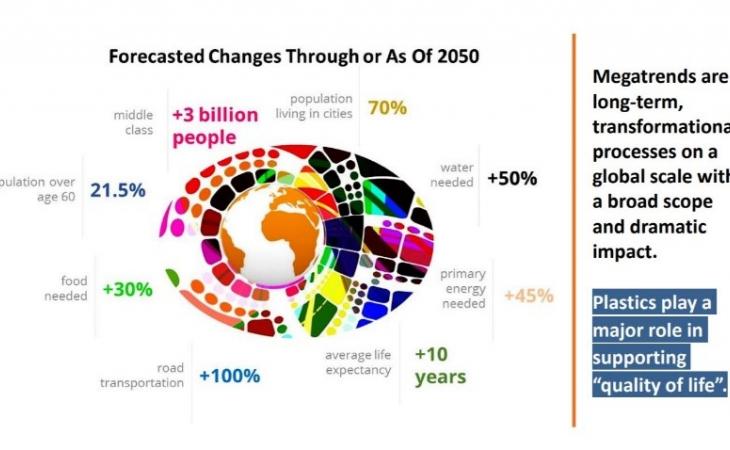This website uses cookies so that we can provide you with the best user experience possible. Cookie information is stored in your browser and performs functions such as recognising you when you return to our website and helping our team to understand which sections of the website you find most interesting and useful.
News
5 Takeaways on Sustainability from Vinyl360
At this year’s Vinyl360, companies across the vinyl value chain came together to talk about the industry’s sustainability journey. The conversation spanned how far the industry has come to how much more we can do to drive innovation and continuous improvement.
To tee up the discussion around the industry’s new +Vantage Vinyl initiative, participants heard a series of perspectives on how sustainability initiatives impact business strategy, supply chains, employees, and customers. Here are the top five takeaways.
Sustainability is a global concern.
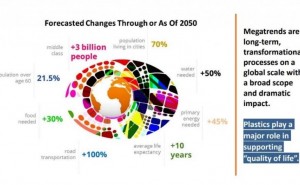
Roberto Ribeiro, president of Townsend Solutions, stressed that “sustainability has become a global mainstream issue both for businesses and consumers.” He said that the top five global risks today include extreme weather events, major natural disasters, and failure of climate change mitigation and adaption. Ribeiro added that PVC can play a major role in building for a sustainable future, but only if the material and the industry are perceived as being purpose-driven – and sustainable.
There is a green reward.
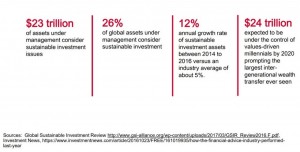
Libby Bernick, managing director and global head of Trucost Corporate Business at S&P Global, talked about how capital markets are increasingly incorporating environmental, social, and governance (ESG) into business decision making. Moreover, sustainable investing is rapidly moving “from the margins into the mainstream.” Bernick noted that one-third of all assets under management globally consider ESG factors. “The signals are clear,” she said, “that markets are starting to reward those companies that are embracing the sustainability journey.”
You can’t lead if you don’t engage.
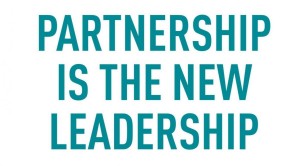
Susan Dorn, U.S. Green Building Council’s (USGBC) general counsel, noted that green building today is a $1 trillion industry. She said that the LEED certification was originally created as a roadmap for developing sustainable buildings that use less energy and water, improve air quality, and enhance health and wellness. Since then, the initiative has expanded considerably, including new LEED for Cities and LEED for Communities programs that offer municipalities and others an opportunity to work collaboratively to make their communities more resilient.
Indeed, Dorn attributed much of USGBC’s growth to building partnerships and engaging with businesses, nongovernmental organizations, and communities.
Retailers are looking for sustainable products.
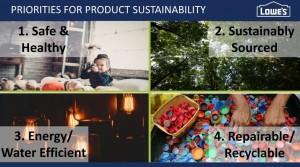
Chris Cassell, director of sustainability for Lowe’s, outlined his company’s priorities for product sustainability and said that Lowe’s is aiming to have more and more sustainable products in its stores. As part of that, Lowe’s is looking for all of its top suppliers to have sustainability goals in place. Cassell also talked about the need to educate consumers and shift their buying behavior toward sustainable products that are better for them, their homes, and their families. The rollout of +Vantage Vinyl in early 2019 will be timely, offering companies across the vinyl value chain new opportunities to collaborate with Lowe’s and other retailers.
Cities are planning for a more resilient future.
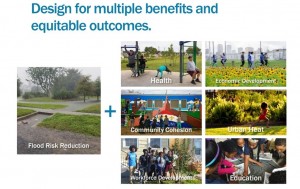
Mary Kincaid, New Orleans’ chief resilience officer, provided an overview of how her city is planning for a more sustainable future. Her main point is that cities aren’t waiting to become sustainable: they’re already innovating and designing for the future. Kincaid discussed the key elements that drive the resilience of a community. She also highlighted several examples of green infrastructure, including stormwater lots, planters, walls, permeable paving, green roofs, and bioswale. And, yes, there is a role for vinyl in the city’s green building and resilient communities’ initiatives.

